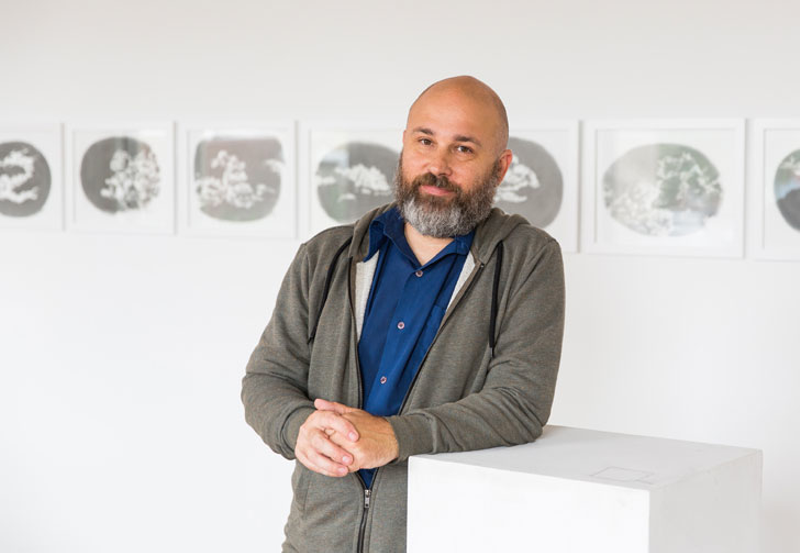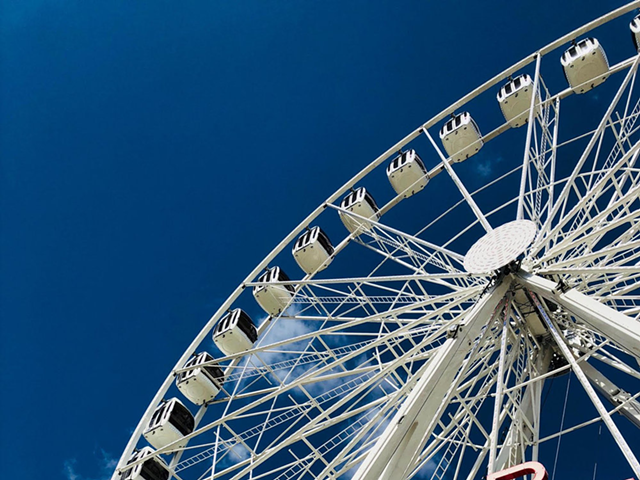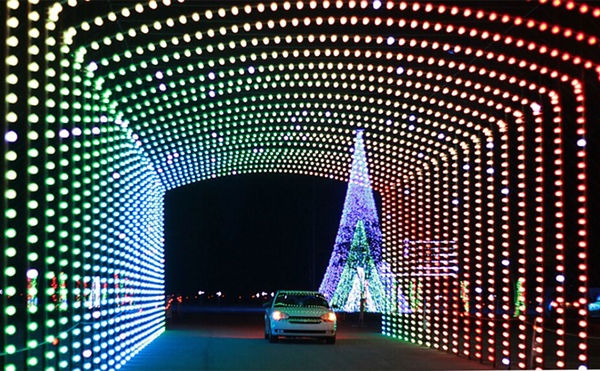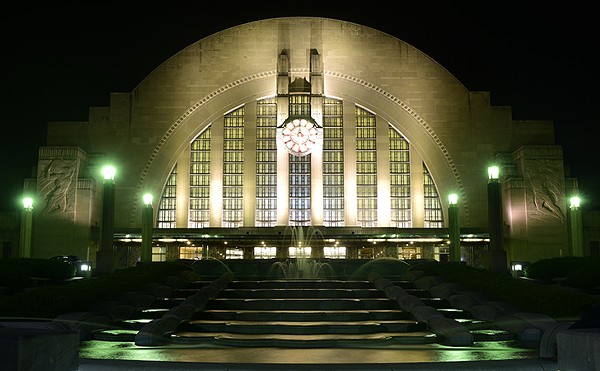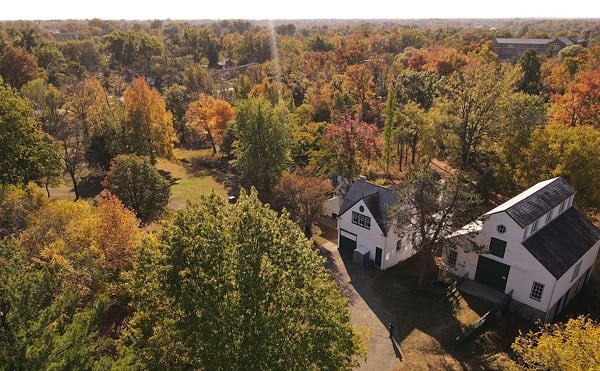The Carnegie’s exhibitions director, Matt Distel, doesn’t mince words. Dry-witted and deadpan, he spoke with CityBeat about fundamental changes in his annual exhibition format, which will revolutionize the ways in which artwork gets into the nonprofit Covington arts center’s galleries. “These are partly built on optimism and hope, and partly based on complete cynicism and defeat,” he says.
The longtime curator, who has worked for nearly every local arts institution in town, says he began reexamining the standard approach for putting together discrete thematic shows as a routine way of reconsidering his audience — many of whom visit The Carnegie to take in a show at the theater rather than an exhibit in the galleries.
“They’re largely a passive audience,” Distel says. “They might not care about how this is an art show about an overarching theme.”
“I don’t want to ignore them,” he continues. “They want to look at artwork and go, ‘Oh, this is really cool,’ and this will give them that. But if I build an exhibition process around them, I would lose my other invested group of people.”
And that invested audience, according to the curator, is artists, by and large. So instead of presenting traditionally curated group shows, framed by a year-long calendar season with each centered around a common theme, Distel is prioritizing The Carnegie’s mission to support the work of local and regional artists. To do so, he has created a process that underscores relationship building and studio visits between artists and external independent curators — thereby minimizing his own voice.
Rather than five or six separate shows per year that demonstrate or explore concepts Distel discovered by visiting artists’ studios, The Carnegie will become a shifting exhibition space, curated by many and constantly in flux. This experiment begins Sept. 7, when the season-long project named Open Source formally begins.
Distel explains that Open Source has a first phase — he calls it “Open Source 1.1” — in which five independent curators with various experience levels and artistic perspectives went out for studio visits. They are: Annie Dell’Aria, assistant professor of Art History at Miami University; Sarabel Santos Negrón, an artist and the director of Museo de Arte de Bayamon in Puerto Rico; Linda Schwartz, an independent curator and owner of Alternate Projects; C.M. Turner, artist, writer and independent curator; and Cori Wolff, director of the Longworth-Anderson Series at Cincinnati’s Memorial Hall.
They selected 22 artists to show work. Throughout the season, additional curators will be invited to reconceive that art already on display in the six galleries, and also to visit studios to select new artists and pieces to exhibit. Instead of the usual one to two years of lead time necessary between seeing work in a studio and scheduling it for gallery display, Distel and his curators can add something to the show as soon as inspiration strikes. The individual galleries will swell and shrink as new curators constantly renegotiate the space.
In terms of keeping track of the checklist and signage, the fluctuating nature of exhibition could be a nightmare. But in true collaborative fashion, Distel is enlisting the help of more artists — in this case, HOT TAKE PRESS, a University of Cincinnati student-driven collaborative book press — to handle mobile signage. They will keep track of where individual artworks have been as they change locations in the galleries.
While there is no firm end date to Open Source, Distel has scheduled opening receptions for new phases. “Open Source 1.2” begins Nov. 30, “Open Source 1.3” begins March 15, and the “1.4” edition has a May 31 starting date.
Distel began to experiment with this idea three or four years ago, when he started bringing out-of-town curators in for studio visits to build or augment local exhibitions. The idea was to see how arts institutions like The Carnegie could help connect artists from this area to people outside of Cincinnati.
“And it kinda worked,” Distel says.
Visiting curators like Bill Thelen from Lump Gallery in Raleigh, N.C. and Derek Franklin from Portland, Ore. met local artists when they were in town for studio visits, and subsequently selected work they liked here for shows in their cities.
Creating relationships like those is part of the new process. That’s important, Distel believes, because the relationship could serve the long-term needs of an artist more than just participating in one particular gallery exhibition.
When The Carnegie as an institution began creating ways to connect artists from this area to people from outside of the Greater Cincinnati art scene, Distel realized he needed to let others make more decisions.
“That’s where I started hitting on the idea that it needs to be less Matt Distel curating shows at The Carnegie,” he says.
Meanwhile, there are two previously planned, more structured exhibits that will occur as Open Source continues — and will also possibly be influenced by Distel’s experiment. The first, Forealism Tribe: The Forealism Files, also opens Sept. 7 and has no formal closing date. It marks The Carnegie’s participation in the FotoFocus Biennial, which is devoted to photography and lens-based art. And on March 15, the exhibit Radical Visibility will be devoted to Chicago-based artist, designer, performer and theorist Sky Cubacub, who will design and create 50 handmade garments for specific community members.
Overall, Distel is seeking to transform our idea about the ways in which a contemporary artist-driven process might look. In doing so, he hopes to facilitate a dialogue between artists and guest curators, as well as between his audience and the artworks.
It is not a simple approach, so there is a lot of room for missteps and mistakes — but also growth. “I’ll screw up and I’m OK with that,” Distel says with sincerity. And he seems genuinely excited to take on the challenge.
The Carnegie is located at 1028 Scott Blvd., Covington. More info: thecarnegie.com.

